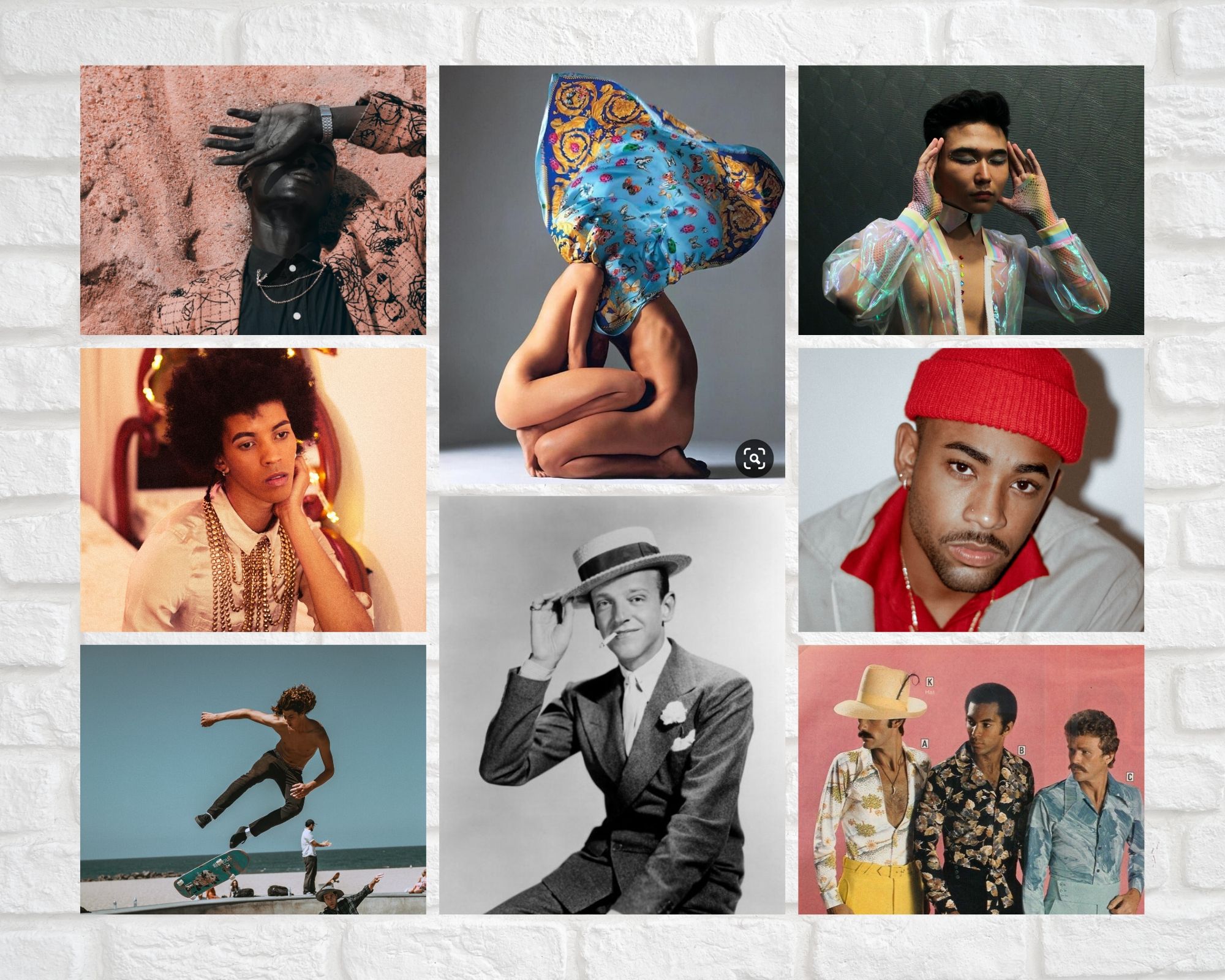"Fashion is a popular aesthetic expression at a particular time, place and in a specific context."

Right? Technically, yes. But to some people it's so much more. Most might say that fashion is a commitment. A commitment to one's thoughts, ideologies, and desires expressed through the clothes, accessories, shoes they wear. It is a commitment which holds them to nothing and no one but themselves, allowing them to feel their absolute best. But that is not always the case.
"You can't use up creativity. The more you use the more you have." - Maya Angelou.
The idea that fashion is something only to be fancied, endorsed, and owned by women has tainted and oppressed the world of men's fashion for several decades. Right from the beginning of the 20th century, men's fashion was, and had been for quite a while, primarily utilitarian and unimaginative.
Men were expected to fit into the very popular and normalized silhouette of a tall, lean, athletic figure accompanied by stiff collars, and three-piece suits consisting of a sack coat with matching waistcoat and trousers, matching coat and waistcoat with contrasting trousers, or matching coat and trousers with contrasting waistcoat. It was assumed to be the image of a strong, dependant, all powerful figure with a responsibility to succeed and provide.
The revolution of men's fashion was painfully slow. Changes having started after the First World War, bringing popular pieces like trench coats and cargos into the scene. After around four decades of back and forth, and experimenting with elegance, conformity, and the birth of ready to wear clothes. The 60s brought about a major and long awaited change in the world of men's fashion.
The 1960s were a decade of unrest and rebellion against the establishment and the conservatism that was celebrated in the 1950s. Clothing reflected this new attitude, especially with the youth who were more concerned with self-expression and individuality than classical dressing by the "rulebook". The fashion industry boomed and profited immensely from this rise of individuality and expression. Stores carried more variety than ever. It was approaching an "anything goes" period, where often the thing that mattered the most was not what you wore, but what you didn't wear.
The first time in history that grown men wanted to look young and care-free. This trend, of course, only took us further away from the rules of elegance and the images of what men were supposed to wear and look like that were established in the 1930s through societal norms and coercion.
The early 1970s were a continuation of late 1960s hippie rebel fashion. For men this particularly meant bell bottom jeans, tie dye shirts, and military surplus clothing. The most popular accessories of the early 1970s for men were homemade, with necklaces, headbands, and bracelets being made from all-natural materials such as wood, hemp, and leather. Men began to wear stylish three-piece suits (which became available in a bewildering variety of colors) which were characterized by wide lapels, wide legged or flared trousers, and high-rise waistcoats. Neckties became wider and bolder, and shirt collars became long and pointed as the "disco funk" was all the rage. On the more luxurious side of things, efforts by renowned fashion designers like Gianni Versace, Calvin Klein, Carolina Herrera, Coco Chanel, Christian Dior, and many more pushed the boundaries for what society had primarily seen and accepted as fashion for both men and women.
Although the changes being a lot more bold for women, the changes seen in clothes available for men drastically changed the playing field and some might even go as far as to say that it was leveled or on that trajectory to say the least. After going through what some might call the most atrocious and tragic era for fashion, that was the 90s. The new millennium ushered in a whole new world for the fashion industry. The changes were rapid, rampant, and unending. It was a new age for self expression, from skinny jeans and t-shirts to flamboyant mobile art installations, nothing was "normal". Designers finally started realizing the essence of masculinity and how it had been misinterpreted and misused for so long, choking both the designer and the presenter of so much potential. Such potential that even after two decades of so many mind boggling and immense changes, it still has not saturated itself.
There will always be barriers left to be broken, and vast fields beyond that to explore. The only things limiting fashion, whether it be any gender, are the minds of the creator, and the interpreter.
"Don't be into trends. Don't make fashion own you, but you decide what you are, what you want to express by the way you dress and the way you live." - Gianni Versace.